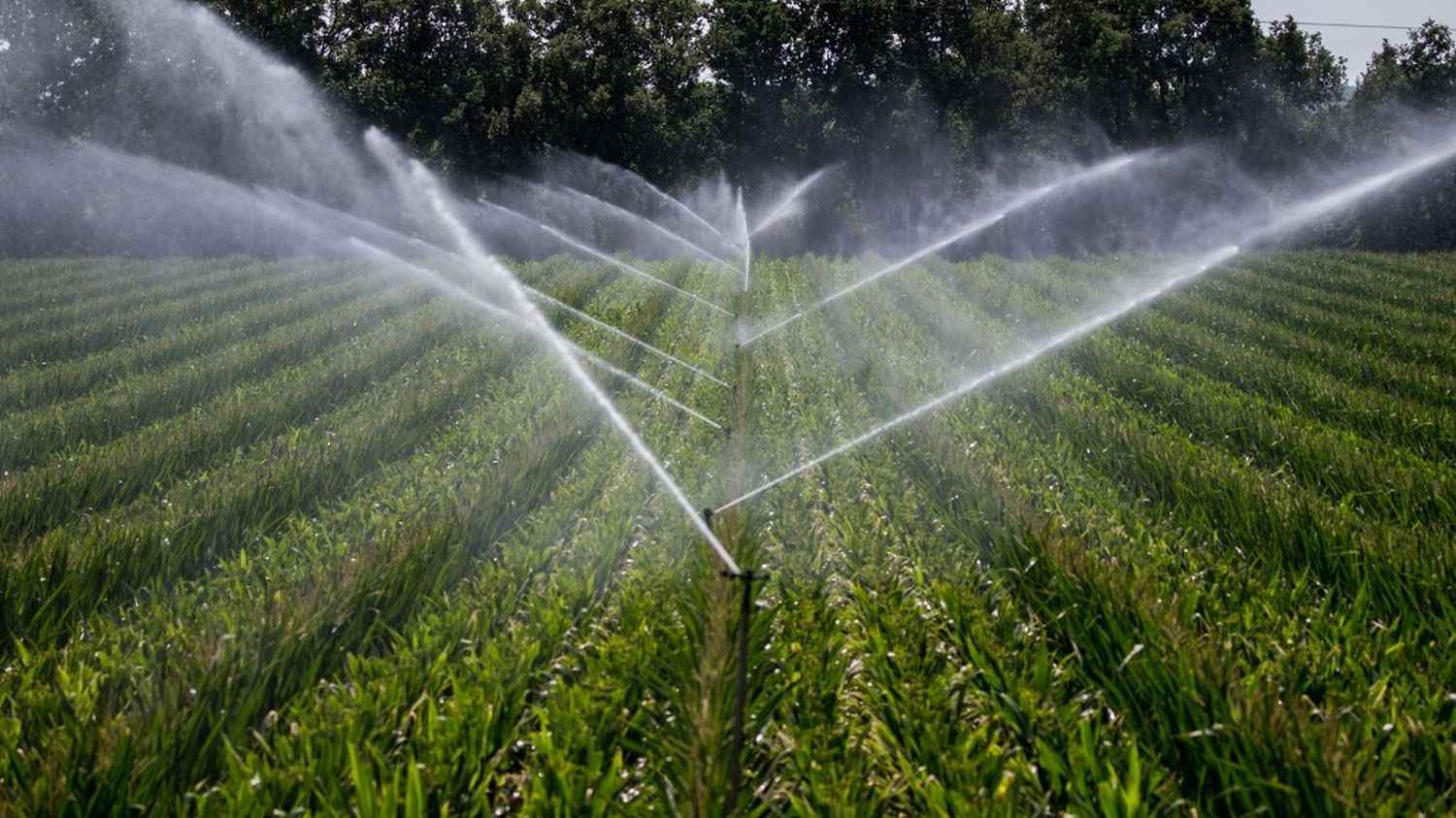The summer of 2022 will probably be the driest France has ever known. In any case, this is an observation that has already been verified for the month of July. In some areas, saving water is urgent and the prefectures are taking measures to restrict consumption. According to the Propluvia site, on Wednesday August 10, the threshold of “crisis”, the highest in terms of drought, had been reached in around sixty departments, on all or part of their territory. At this level of alert, it is forbidden to water your lawn, fill your swimming pool, wash your car or your facades and roofs, but also to irrigate crops.
But what do agriculture, domestic use or the cooling of nuclear power plants weigh in on water consumption in France? Franceinfo takes stock, supporting graphics.
32.3 billion m3 of water withdrawn
Each year in metropolitan France, it rains on average (calculated over the period 1990-2018) 512 billion cubic meters of water, or 932 mm, according to data from the Ministry of Ecological Transition (PDF file). Of this precipitation, 60% evaporates. The remaining 40% is “effective rainfall”, i.e. the water that feeds streams or groundwater, and therefore remains available.
In these surface and underground waters, France pumps 32.3 billion m3, according to 2018 data. This is the so-called “withdrawn” water, which includes the water consumed and that returned directly after use, such as this is the case for open-circuit nuclear power plants, for example. Half (16 billion m3) of this fresh water is actually used to cool the power plants, and 5.4 billion (16.8%) to supply the canals. The remaining 30% is withdrawn for the production of drinking, agricultural or industrial water.
All the water withdrawn for cooling the power stations and supplying the canals comes from surface water. For drinking water, agriculture or industry, samples are taken from both surface and underground waters, which are cleaner.
As for industrial uses, data provided by the National Bank of Quantitative Water Samples (BNPE) show the volumes of water used by each facility in France. According to these data, the industries that withdrew the most water in 2018 were the Alsachimie plant near Mulhouse (100.8 million m3), a waste recovery plant in Grand-Quevilly near Rouen (79 .4 million m3) and another located in Issy-les-Moulineaux, near Paris (79.3 million m3).
5.3 billion m3 of water consumed
The water consumed, that is to say that which is not returned to aquatic environments after use, represents an average of 5.3 billion m3 each year, or about 16% of the water withdrawn. This represents 82 m3 per inhabitant, specifies the Ministry of Ecological Transition.
Agriculture is the main consumer, with 45% of the total, ahead of the cooling of power stations (31%), the production of drinking water (21%) and industrial uses (4%).
Unlike industry, agriculture consumes almost all of the water withdrawn. If it uses 45% of the water consumed in France over a year, this share rises to 80% over the period from June to August, notes the ministry. Limiting irrigation in summer therefore becomes all the more strategic.
Water for agricultural use is mainly used to feed livestock and irrigate crops. In 2020, 7.3% of the agricultural area was irrigated, compared to 5.8% in 2010, mainly in the southern half of France. Irrigated crops are primarily corn (41% of the irrigated area), ahead of wheat or sorghum (17%), according to figures from 2010.
But the distribution of the water consumed is very variable according to the basins. The most consuming area for electricity production is the Rhône-Mediterranean basin. Regarding agriculture, the Adour-Garonne basin is the most greedy. It should be noted that these accounts do not include the consumption of sea water for the nuclear power plants located along the Channel (Gravelines, Paluel, Penly and Flamanville).
3.7 billion m3 of drinking water consumed
In all, 4.9 billion m3 of drinking water were put into circulation in 2020, according to data from the French Office for Biodiversity (OFB). But about 20% of this volume is lost each year, due to leaks in the distribution networks. As a result, 3.7 billion m3 of drinking water were consumed. In other words, each French person consumes 149 liters of drinking water per day on average, according to the Observatory of public water and sanitation services. A figure that has been generally stable for ten years.
What is the distribution of the consumption of this drinking water by use within a household? Data published by the Water Information Center show that the first item of consumption is the shower and the bath (39%), ahead of the toilets (20%) or the laundry (12%). Water used for food represents only 7%, between cooking (6%) and drinking (1%).
This data gives an idea of the places in the house where it is most useful to reduce water consumption. But these figures have not been updated since… 1995. In 27 years, it is easy to imagine changes in household practices and equipment, for example. Contacted by franceinfo, the Water Information Center believes that variations may have taken place at the margin, and hopes to be able to update this estimate.
